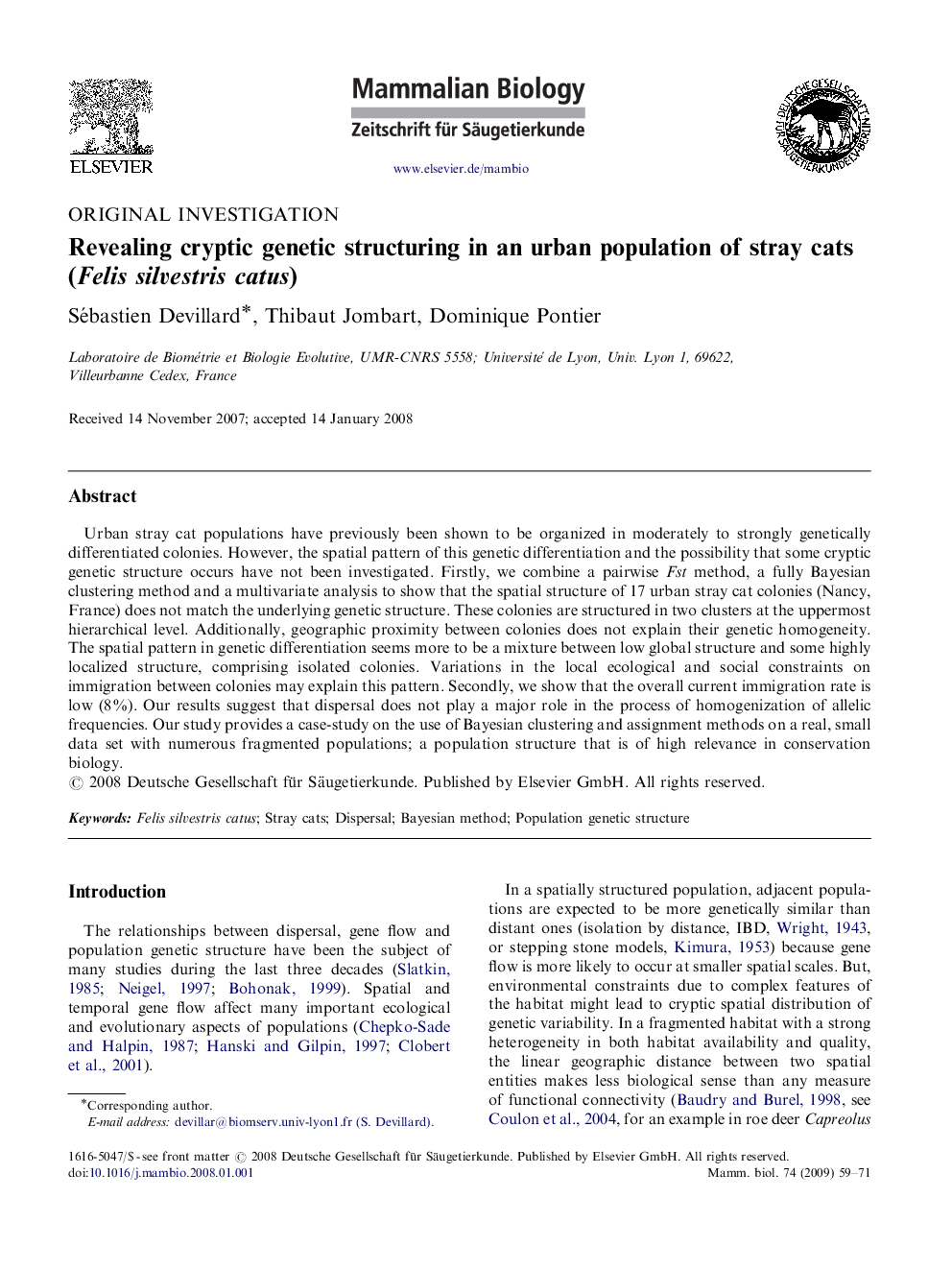| Article ID | Journal | Published Year | Pages | File Type |
|---|---|---|---|---|
| 2193991 | Mammalian Biology - Zeitschrift für Säugetierkunde | 2009 | 13 Pages |
Urban stray cat populations have previously been shown to be organized in moderately to strongly genetically differentiated colonies. However, the spatial pattern of this genetic differentiation and the possibility that some cryptic genetic structure occurs have not been investigated. Firstly, we combine a pairwise Fst method, a fully Bayesian clustering method and a multivariate analysis to show that the spatial structure of 17 urban stray cat colonies (Nancy, France) does not match the underlying genetic structure. These colonies are structured in two clusters at the uppermost hierarchical level. Additionally, geographic proximity between colonies does not explain their genetic homogeneity. The spatial pattern in genetic differentiation seems more to be a mixture between low global structure and some highly localized structure, comprising isolated colonies. Variations in the local ecological and social constraints on immigration between colonies may explain this pattern. Secondly, we show that the overall current immigration rate is low (8%). Our results suggest that dispersal does not play a major role in the process of homogenization of allelic frequencies. Our study provides a case-study on the use of Bayesian clustering and assignment methods on a real, small data set with numerous fragmented populations; a population structure that is of high relevance in conservation biology.
